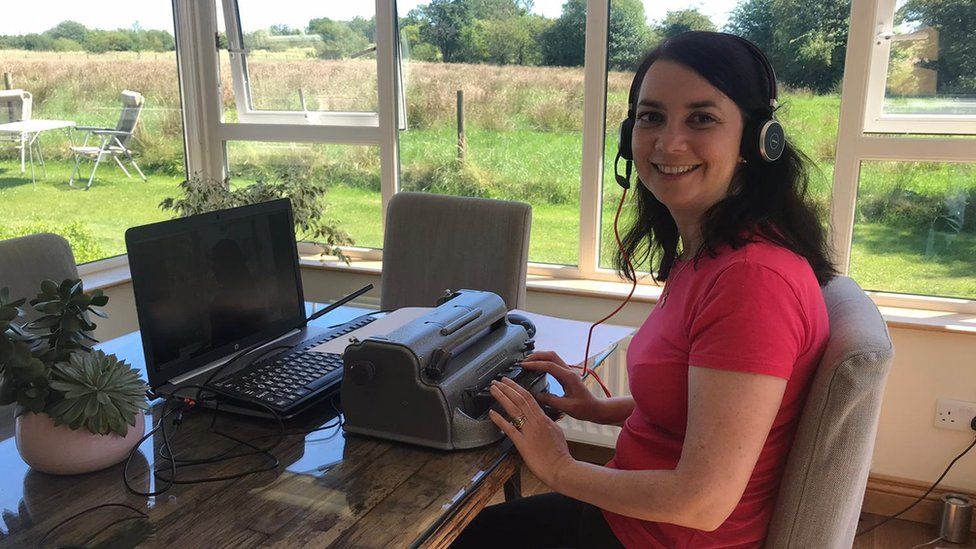
Remote learning was a struggle for many people during the Covid-19 pandemic but for Dawn Hopper it presented a particularly tough challenge.
The 42-year-old was diagnosed with glaucoma three years ago and is now registered as severely sight impaired.
Before the pandemic began in March 2020, she decided to learn Braille.
"When the lockdown restrictions came in, it was a choice of stopping the lessons or switching to learning Braille remotely," she said.
"It was quite a challenge but I knew I really wanted to master it so I persevered. It's important to me.
"It is hard, like learning a new language.
"But for me, my goal is to be able to read in silence again."
Glaucoma is a common eye condition where the optic nerve becomes damaged.
The loss of her sight made it difficult for Dawn to continue reading or writing in print. Learning Braille changed that, she said.
What is Braille?
The writing system is based on variations of six raised dots, arranged in two columns of three.
Variations of the six dots represent the letters of the alphabet, punctuation, numbers and groups of letters.
"I use a Perkins Brailler to write braille. It's very different from using a pen," said Dawn.
"It's a bit like an old fashioned mechanical typewriter only it punches raised dots in the paper which you feel, rather than using ink."
Braille was invented by the Frenchman Louis Braille in 1829. He went blind after developing an infection in his eye at the age of five.
Wednesday marks Louis Braille Day, the anniversary of his birth.
Advances in technology, including the development of computers that speak, have led to a decline in Braille literacy rates.

But the Royal National Institute of Blind People in Northern Ireland (RNIB) said the system was "as vital as ever".
"Audiobooks are great but there's nothing like enjoying a book in peace and quiet. Hearing the book with your own voice," Dawn added.
"I suppose it's just what I'm used to having used my vision to read up until my glaucoma diagnosis."
Dawn is now passing on her skills to others. She recently taught her 10-year-old goddaughter Lyra to read Braille.
'He is my lifeline'
Dawn, who lives in County Antrim with her husband Simon, now volunteers with the RNIB to raise awareness of sight loss.
"I feel lucky to be able to bring some of what I've been through to those who might know nothing about it," she added.
"Hopefully as people get to know more about sight loss, society will change and the barriers faced by blind and partially-sighted people will come down."
As well as learning Braille, Dawn decided to get a guide dog to improve her independence further.
"He is called Mickey. He is brilliant, he is my lifeline. We're getting to know each other and he is part of the family.
"He is so friendly and handsome."
Mickey travels with Dawn, something she was unable to do because of her diagnosis.
"We get the community bus together. It means I can go to the places I want to go to, feel safe and have a companion. It's been a relief."
A brighter future
The RNIB has more than 10,000 Braille library master-files it can produce a book from and also transcribes magazines and TV guides into Braille.
Robert Shilliday, country director of RNIB in Northern Ireland, said Braille offered "independence, knowledge and freedom" to people with visual impairments.
"Braille also lets you read a bedtime story to children, a presentation at work, read music from braille music sheets, or play games such as braille Monopoly, Scrabble and cards," he added.
Dawn said developing the new skill had helped her stay positive about the future.
"Just because my eye sight has changed that doesn't mean I have to stop doing the things I enjoyed," she said.
From BBC
